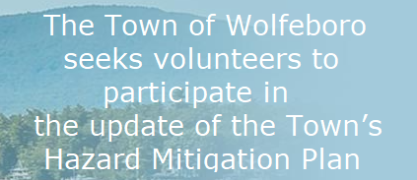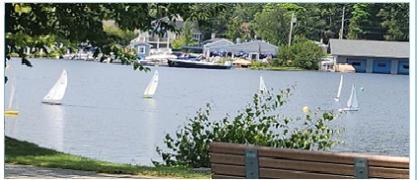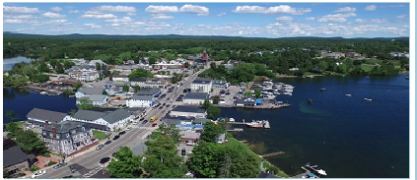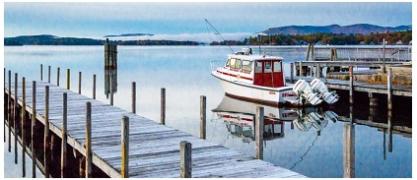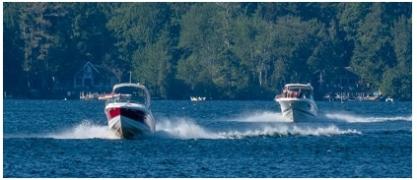2020 Assessment Summary Report
2020 Wolfeboro Waters
Water Quality Summary Report
The Wolfeboro Waters 2019 Assessment Subcommittee Summary Report describes what has been measured over the years in our lakes, why, how the results are interpreted, and watershed management plans ( https://www.wolfeboronh.us/wolfeboro-waters-committee/pages/2019-assessm... ). This report covers what has been done and learned since then in 2020 as well as assessment goals for 2021.
Executive Summary
While the pandemic limited some of our 2020 water quality assessment plans and has created difficulties and time delays in obtaining desired laboratory equipment and supplies, we have been able to advance our knowledge of Wolfeboro Waters conditions and trends including the risks of cyanobacteria, while actions were being taken to reduce nutrient runoff to our lakes.
• The Town of Wolfeboro voters approved warrants for several public works projects to reduce nutrient runoff to our lakes that were undertaken in 2020.
• Volunteer water sampling continued on Lake Winnipesaukee, Lake Wentworth, Crescent Lake, Rust Pond, and Mirror as part of the University of New Hampshire- Extension Service’s LLMP program and the NH Department of Environmental Services’ VLAP program. These lakes continue to be classified as having good water quality with limited biological growth (ogliotrophic), with the exception of Mirror Lake, which has moderate biological growth (mesotrophic).
• While cyanobacteria blooms were observed across NH in 2020, resulting in 25 NHDES Cyanobacteria Advisories and numerous warnings, there were none confirmed in Wolfeboro Waters.
• The World Health Organization released an 859 page Second edition to its Guide on Cyanobacteria. Among the many conclusions in the report was that there is no scientific evidence to support the hypothesis that there is a link between cyanobacteria blooms and ALS (Lou Gehrig’s Disease) or Parkinson’s Disease.
• The concentration of phosphorus in the water and/or sediment is a key element determining the amount of biological growth there is in most of our lakes, including cyanobacteria. Some cyanobacteria maybe influenced by the amount of nitrogen in the water. The growth in some of our waterbodies or portions of them maybe also be influenced by sediment flux and groundwater/septic systems.
• Stormwater runoff sources along our shores are the most important source of phosphorus being added to our lakes and are likely to result in local variations in biological growth.
• While most measurements of total phosphorus concentrations are made at deep water sites in our lakes during summer months, measurements nearer the shore in spring and autumn often show much higher concentrations.
• It is likely that conditions vary locally along the shoreline, depending upon the proximity to nutrient-rich streams and stormwater runoff, and, perhaps, also from shoreline sediment washed into the lake from waves from boats, high winds, and storms.
• With the assistance of senior scientists from Bigelow Lab, we have determined that the sediment along the shores of Winter Harbor is an important source of phosphorus stimulating biological growth on the bottom.
• With the assistance of senior scientists at Bigelow Lab and NHDES, we have identified several different types of cyanobacteria in Winter Harbor, including very tiny picocyanobacteria that do not produce surface blooms, all types of which have the potential to produce and release toxins into the water.
• We observed fuzzy-diffuse (cotton candy-like) balls in late summer in the water of Winter Harbor, referred to by some as metaphyton. Analysis of a sample containing metaphyton showed that it contained cyanobacteria.
• We have purchased a Biomeme Thermocycler, portable PCR device, that should enable us to measure within hours in Wolfeboro the relative concentrations of preselected cyanobacteria.
• We hope to conduct more detailed analyses of the concentrations of different forms of phosphorus and nitrogen in our water and sediment in conjunction with the relative concentrations of five or six specific cyanobacteria over time in 2021, focusing on Winter Harbor with representative samples from our other lakes for comparison.
• Among the other plans for 2021 is an effort to collect online voluntary observations of shoreline residents about local conditions in the water and on the lake bottom near them in order to get a better overview of local conditions around Wolfeboro Waters. more...


